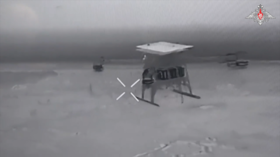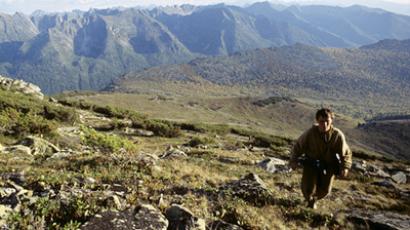Past and future meet on Khabarovsk coast
The Khabarovsk Region in Russia’s Far East is the country’s main gateway to the Pacific. It is also a center for coal and wood exports to the heavily-populated and fuel-hungry Asian economies, including China, South Korea and Japan.
As RT discovered, keeping industry alive there does not have to be at the expense of tradition.A coal stacker is a monstrous-looking machine which has become the new face of Russia's Far East coast. It can load over 4,000 tons of coal per hour onto ships at rapidly-expanding sea terminals. In 2011, they exported 10 million tons of coal, almost exclusively to Asian markets with lie to the south of the region.“We’ve noticed there’s a coal boom. Coal consumption worldwide has increased. So this port covers almost all of Asia,” Aleksandr Ganin, a CEO at LLC Daltransugol – SUEK's branch, told RTThe coal comes from some of Russia’s largest deposits, 500 km inland. Like oil and timber, it is flowing out of the region in ever greater quantities. Tugboats maneuver the ships into place, through storms and the winter cold.“When the bay freezes, we know we’re well equipped to break it,” says Valery Volkov, a tugboat captain. “Sometimes there’re difficulties with some patches, but we’re essential to help these huge ships dock and undock all year round.”And even the most modern tankers, once on their way, are helped along by a much older technology. Up and down the coast, vast new shipping terminals are springing up to supply overseas markets. But they are built on much older seafaring foundations, such as old lighthouses which long ago helped safeguard Russia’s gateway to the Pacific. Hundreds of such lighthouses dot the coast all the way from the border with North Korea up to the Arctic.Viktor Gorlov has manned his lighthouse for over 30 years, but he is glad he is not too far out into the wilderness.“We’re close enough to the nearest town. Other lighthouse keepers are stuck out in the Taiga without even roads,” he said. “Sometimes a ship or a helicopter delivers supplies, but there’s no other way to come or go.”Viktor has not had a ship run aground since the early 1990s. He has seen bears, moose and tigers visit his lighthouse and says he never grows bored of the ever-changing seascape. Far from feeling lonely, he talks of the romanticism of living in such a secluded spot on the coastline.“I used to go down to the bay at 4 am, catch some crabs and start a fire. Then my wife and kids would join me and we’d have breakfast on the shore and watch the sunrise. In the summer this whole field would be bright orange in bloom,” he remembers.Viktor retires next year. He says he has come to love this spot, like Robinson Crusoe on his island. And while he can remember the pristine beauty of this coastline, others are providing the impetus keep it sailing on into the future.













